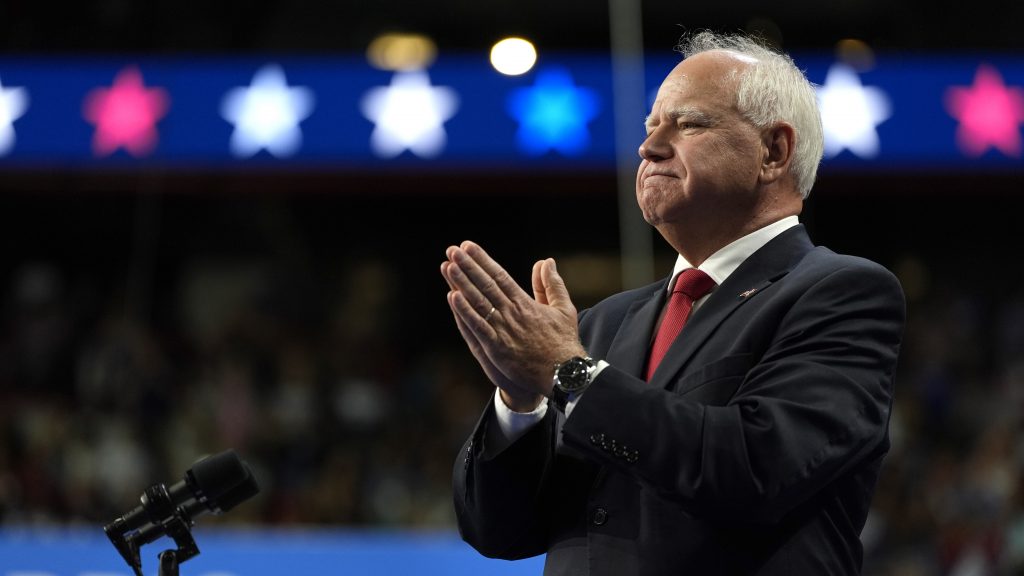Created Equal: How progressive policy made Minnesota the most prosperous state in the Midwest
Justina Giglio August 15, 2024Gov. Waltz’s progressive policies have made Minnesota perform much better with its economy, social safety support, and quality of life than other states in the Midwest.

Democratic vice presidential nominee Minnesota Gov. Tim Walz speaks at a campaign rally, Saturday, Aug. 10, 2024, in Las Vegas.
The Democratic Party is expected to officially nominate Gov. Tim Waltz at the Democratic National Convention in Chicago next week.
As Minnesota’s governor, he’s passed a multitude of progressive legislation to help improve the lives of Minnesotans. In his first term, Gov. Waltz has made historic investments in education, expanded worker’s rights, provided tax cuts for working families and the middle class, expanded voting rights–and more.
Subscribe to Created Equal on Apple Podcasts, Spotify, Google Podcasts, NPR.org or wherever you get your podcasts.
Gov. Waltz’s progressive policies have made Minnesota perform much better with its economy, social safety support, and quality of life than other states in the Midwest.
To discuss what Minnesota is doing to unite liberals and conservatives on voting for these policies, Prof. David Schultz from Hamline University and Prof. Louis Johnston from Saint John’s University join the show.
Guests
Prof. David Schultz is a distinguished Professor of Political Science and Legal Studies at Hamline University. He says the voting patterns in the St. Paul metropolitan area has driven the liberal policies within the last decade.
“There’s been this kind of political coalition and consensus — I’m going to say in the last 20 years, and especially in the last few years — what’s really happened to allow for the enactment of a lot of these progressive policies,” Schultz said. “Minnesota is dominated by Minneapolis, St. Paul, much in the same way that Detroit dominates, population wise, Michigan — but even more so. The metropolitan area is about 55% of the population in the vote, and it votes very liberally. And what’s happening, is that the liberal voting patterns of Minneapolis, St. Paul has really come to drive Minnesota politics in the last 10 to 15 years.”
Prof. Louis Johnson is a professor of economics in the College of Saint Benedict at Saint John’s University. He claims the recent progressive legislation is due to a second “Minnesota Miracle.”
“The Minnesota Miracle of 1971 came about because of Minnesota’s tremendous growth between the end of the Second World War and the late 1960s. This second one, if we’re going to call it that, is the same kind of phenomena,” Johnson explained. “Minnesota, especially starting in the mid-1990s, benefited tremendously from the end of the Cold War and the high tech boom. And so by 2022, we had very large budget surpluses, and the question was: ‘What are we going to do with them?’ With the Democratic control of both branches of Legislature and the control of the governor’s office, they doubled down on the idea of investing in people rather than cutting taxes and hoping that things would happen.”
